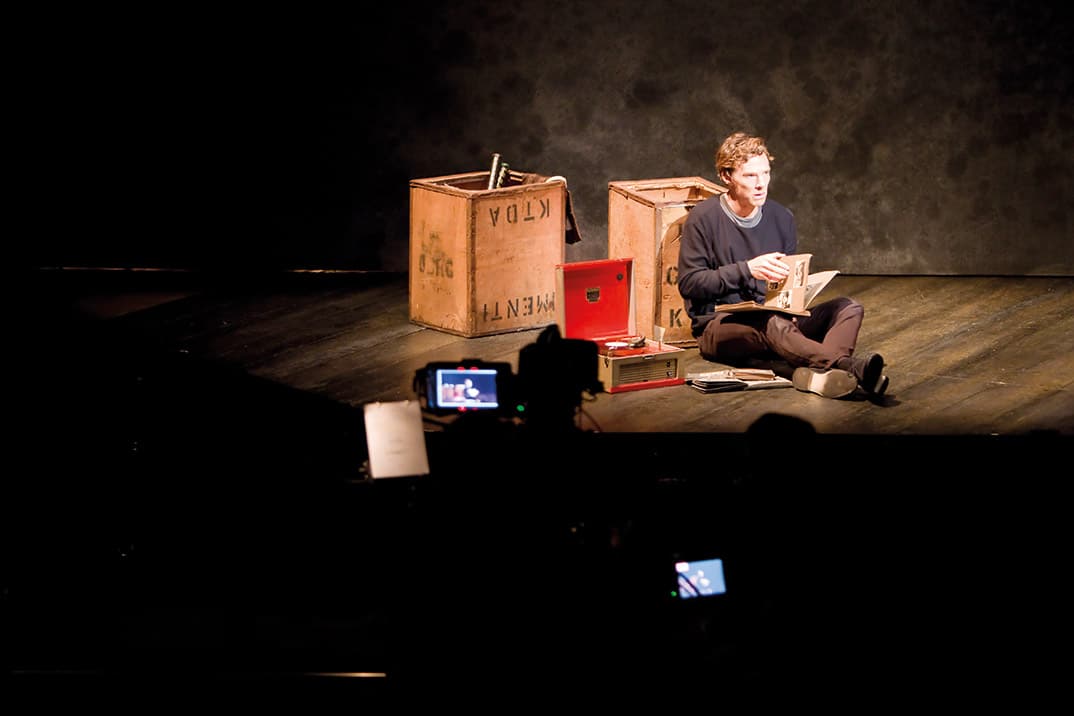There was a time when going to the opera or ballet meant you were in the upper echelons of society – not to mention culturally highbrow.
Then, of course, there was the matter of what you could and couldn’t wear to these elitist and often very expensive occasions. Black tie and ballgowns were pretty much the only attire permitted if you were off to see La Bohème or Romeo and Juliet at the Royal Opera House.
How things have changed over the past few years. Now you can enjoy a wide variety of the world’s finest ballets, theatre performances and operas live, locally, and for a mere fraction of the original ticket price – in clothes as casual as you like.
When the curtain goes up at the Royal Opera House or the National Theatre, audiences around the country can also enjoy the thrill at the very same time as their theatre counterparts.
The reason for this is because live streaming of theatrical productions, which is the process of broadcasting real-time, live video footage to an audience via the internet, has now become incredibly popular and also very lucrative. It’s worth an impressive £12.5million in the UK.
One of the first theatre companies to live stream was the New York Metropolitan Opera, who helped to pioneer the concept in 2006.
Since then many British production houses, including the Royal Shakespeare Company, Glyndebourne and the English National Opera, have also followed suit.
There are a number of places you can catch live streaming in the local area such as the Picture House in Uckfield, Hawkhurst’s Kino cinema and Trinity Theatre and Odeon cinema in Tunbridge Wells.
This month alone, Odeon audiences will be treated to live screenings of the Royal Shakespeare Company’s 400th birthday celebrations for William Shakespeare, as well as the Bolshoi Ballet’s Don Quixote and also an art exhibition entitled ‘Painting The Modern Garden: Monet To Matisse’.
“Live events are perfectly suited to the big screen,” an Odeon spokesperson told me. “The amazing cinema sound and multiple camera views give guests a unique vantage that they wouldn’t get at home or even at the theatre. We feel that this is a great way to give people more access to arts and culture. At Tunbridge Wells the feedback from guests has been incredible.”
Trinity will be showing the National Theatre’s Hangmen on April 21 as well as a number of Glyndebourne’s productions starting with the Barber of Seville on June 21.
“Not only do these broadcasts make performances accessible, they also open up the world to us,” says Trinity’s John Martin.
“We have had performances from Russia, Broadway and Australia as well as London. The other bonus is audiences have access to shows that are sold out and extremely difficult to get tickets for.
“Also all the evidence is indicating that these broadcasts are raising interest in live theatre rather than moving people away from it.”
When we spoke to the Royal Opera House’s Sophie Wilkinson about the trend she told us: “We hope by introducing these art forms there will be an increased interest in ballet, opera and theatre across the board from regional theatres and touring companies.
“We try to present a mixture of original productions and the much loved classics. It enables us to engage with new audiences and overcome the barriers of geography and cost.”
The Royal Opera House’s live transmissions of prestigious productions such as La Traviata and Giselle have been screened all over the world reaching audiences in as many as 35 countries.
For the National Theatre the number is even greater. Since their first screening of Racine’s Phèdre starring Helen Mirren in 2009 they have reached 4.5 million people in 50 countries.
Their biggest single production to date is Hamlet which starred Benedict Cumberbatch and was seen by 450,000 people in 2015.
Martin Shippen, a spokesperson for the National Theatre explains: “We began National Theatre Live as a way to increase access to our work for those audiences who might not otherwise have the opportunity to see it.
“We have been thrilled by the enthusiastic response we have received. The history of filmed theatre doesn’t have a great track record, so we went into the series as something of an experiment, but feel we have very successfully captured the productions, honouring the integrity of the work created for our stages.”
The National Theatre has also collaborated with other performance companies, including the Donmar Warehouse, and also streamed live from the Manchester International Festival.
“Whilst we could never replicate the experience of actually sitting in the theatre,” continues Martin, “the broadcasts retain something of the feeling of live performance and there is a real sense of event, with so many people around the world connected and sharing in the experience.”
One venue that isn’t considering a move to live cinema streaming is the Assembly Hall in Tunbridge Wells.
Adam Chalmers, Head of Partnerships and Engagement for Tunbridge Wells Borough Council, admits that live screenings offer a great opportunity to bring theatre, ballet and opera performances from stage to screen but they are happy to let others do it.
“We are fortunate that the town is so well served by Trinity as it enhances our existing cultural offer,” he says.
“The Assembly Hall Theatre brings West End tours and visiting opera and ballet companies live to our stage and both theatres continue to complement each other.”
Yet although seeing something performed live on stage is always preferable, it’s fair to say that seeing a classic opera or groundbreaking piece of contemporary theatre in a local venue that doesn’t require a fussy dress code plus a theatre ticket that’s affordable is certainly a pretty good substitute.








